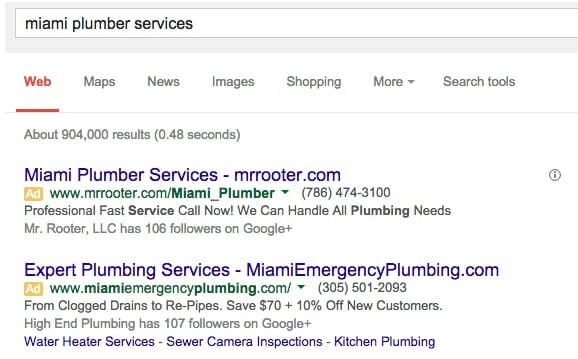[display-name-category]
[post_author]
We’re all looking to write engaging copy. Writing a text for your Google Ads is one of those things that seem incredibly simple, but somehow take up a lot of time.
Writing great ads for Google Ads takes practice. Over time, you pick up on the primary considerations of how to produce high-quality content for your business objectives. Four components go into every single ad. The way to tackle each of these components depends on what you’re trying to sell and essentially what type of business you are. Here are some notes on each:
- Headline: Your text ads consist of 3 headlines where you can enter up to 30 characters each to promote your product or service. The headlines are separated by a vertical pipe (“|”) and may show differently based on the device someone is using when they view your ad.
- Description: This description field is used to highlight details about your product or service. Ideal for a “call to action”—the action you want your customer to take.
- Display URL: The display URL, usually in green, shows your website address, and the path 1 and 2 help on the vanity URL. These fields are designed to help people who see your ad get a better sense of where they’ll be taken when they click it.
- Landing Page: Your landing page is the URL people arrive at after they click your ad, and Google Ads analyzes it through a combination of automated systems and human evaluation.
Each of these components plays a role in the effectiveness of your campaign’s copy. It informs and directs the user on how and where to take action.
Today we will focus primarily on strengthening headlines. Before we review best practices, let’s discuss what you should avoid when writing out your copy.
The Don’ts of Headlines
Best practices don’t only include what you should do, but what you should avoid placing in each of these.
The 8 most common ad writing mistakes that we’ve seen over the years:
- Not Utilizing The Top Ads Format
- Not Testing Your Ad Copy
- Using Overly Specific Ad Text for Generic Keywords
- Repeating Yourself In Your Ad Sitelinks
- Thinking You Can “Skip” a Period, Letter or Space
- Breaking Your Ad Text Where It Doesn’t Make Sense
- Copying Your Competitors, or Not Noticing You Have Been Copied
- Having Outdated Ad Text
These examples are most relevant to local businesses, but the blueprint can be used for all advertisers. Run some of these through your recent headlines to pinpoint where some of your headlines may be improved.
Including Part of Your Ad Group’s Main Keyword
One of the most challenging things to master is writing a headline that makes an emotional impact within the 30 character limit. Our strategists recommend including part of a keyword, as it will help the headline stand out with the user. Mind you, this won’t affect the ranking the way it used to, but it will jump out at the searcher.
Let me give you an example. Let’s say that you have the following keywords in an ad group:
- plumber fast quote
- plumber near me
- local plumbers
A typical practice in such an ad group would be to use Dynamic Keyword Insertion. This would insert your keyword in the headline as they get triggered. That’s beneficial as it ensures relevancy between keyword and ad. However, it’s also what everybody else is doing:

It’s important to use enticing words to elevate your text. Given the example above, who would you rather go for in this example? Mr. Rooter has the exact thing you’re looking for, but Miami Emergency Plumbing is experts. Who would you try first?
We’re all looking to write engaging copy. Stay tuned for Part II of our Ad Writing 101 series of Headlines. Subscribe to our blog to get it directly in your inbox.






